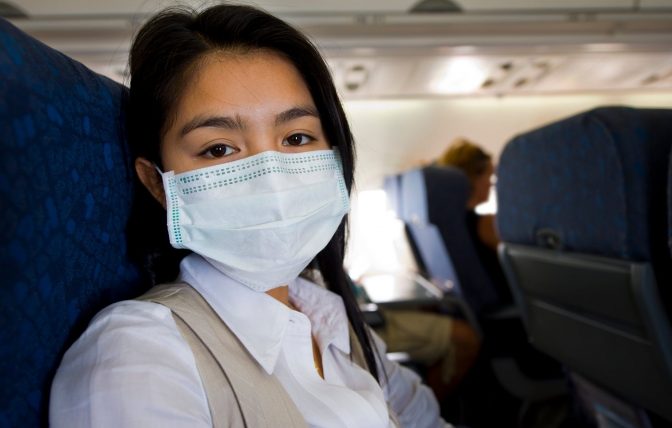

The International Air Transport Association (IATA) has called for the wearing of face coverings for passengers and masks for crew while on board aircraft as a critical part of a layered approach to biosecurity to be implemented temporarily when people return to traveling by air. However, IATA says that they do not support mandating social distancing measures that would leave ‘middle seats’ empty.
Evidence suggests that the risk of transmission on board aircraft is low. Mask-wearing by passengers and crew will reduce the already low risk, while avoiding the dramatic cost increases to air travel that onboard social distancing measures would bring.
“The safety of passengers and crew is paramount. The aviation industry is working with governments to re-start flying when this can be done safely. Evidence suggests that the risk of transmission on board aircraft is low. And we will take measures—such as the wearing of face coverings by passengers and masks by crew—to add extra layers of protection. We must arrive at a solution that gives passengers the confidence to fly and keeps the cost of flying affordable. One without the other will have no lasting benefit,” said Alexandre de Juniac, IATA’s Director General and CEO.
Measures to Reduce the already low risk of onboard transmission
IATA recommends mandatory face-coverings for passengers and masks for crew as one of several actions to reduce the already low risk of contracting COVID-19 on board aircraft.
In addition to face coverings, these layers of temporary biosecurity measures being proposed include:
When proven and available at scale, testing for COVID-19 or immunity passports could also be included as temporary biosecurity measures.
Moreover, even if implemented keeping the ‘middle seat’ open will not provide the recommended separation for social distancing to be effective. Most authorities recommend 1m-2m while the average seat width is less than 50 cm.
“The cabin environment naturally makes transmission of viruses difficult for a variety of reasons. That helps explain why we have seen little evidence of onboard transmission. In the immediate term, our aim is to make the cabin environment even safer with effective measures so that passengers and crew can return to travel with confidence. Screening, face coverings and masks are among the many layers of measures that we are recommending. Leaving the middle seat empty, however, is not,” said de Juniac.
The long-term solutions for COVID-19 depend on medical science.
“We need a vaccine, an immunity passport or an effective COVID-19 test that can be administered at scale. Work on all of these is promising. But none will be realized before we will need to re-start the industry. That’s why we must be ready with a series of proven measures, the combination of which will reduce the already low risk of inflight transmission. And we must be careful not to hard-wire any solution so we can be quick in adopting more efficient measures as they will undoubtedly become available,” said de Juniac.
Economic Impact
Calls for social distancing measures on aircraft would fundamentally shift the economics of aviation by slashing the maximum load factor to 62%. That is well below the average industry breakeven load factor of 77%.
With fewer seats to sell, unit costs would rise sharply. Compared to 2019, air fares would need to go up dramatically—between 43% and 54% depending on the region—just to break even.
“Airlines are fighting for their survival. Eliminating the middle seat will raise costs. If that can be offset that with higher fares, the era of affordable travel will come to an end. On the other hand, if airlines can’t recoup the costs in higher fares, airlines will go bust. Neither is a good option when the world will need strong connectivity to help kick-start the recovery from COVID-19’s economic devastation,” said de Juniac.